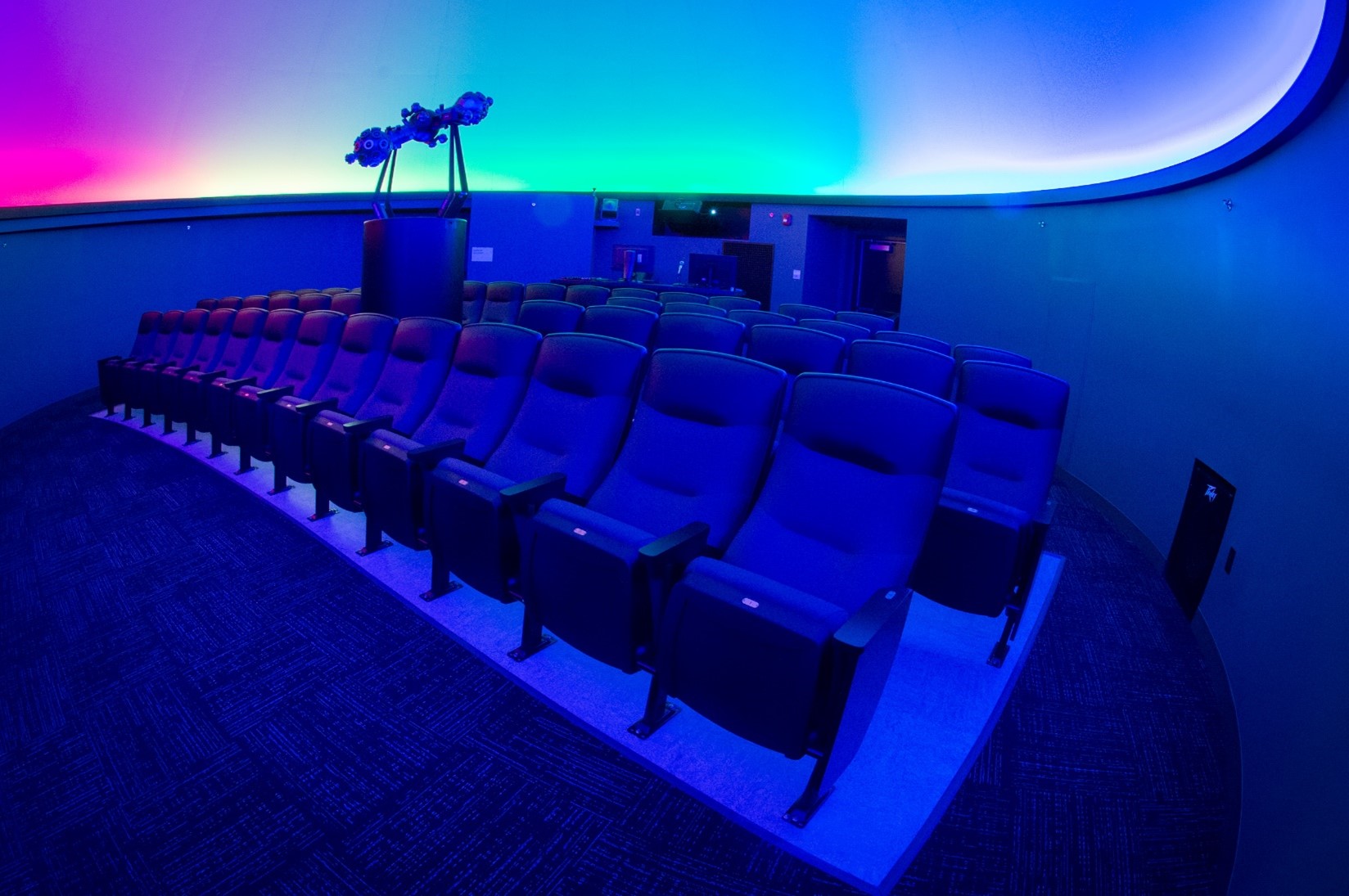
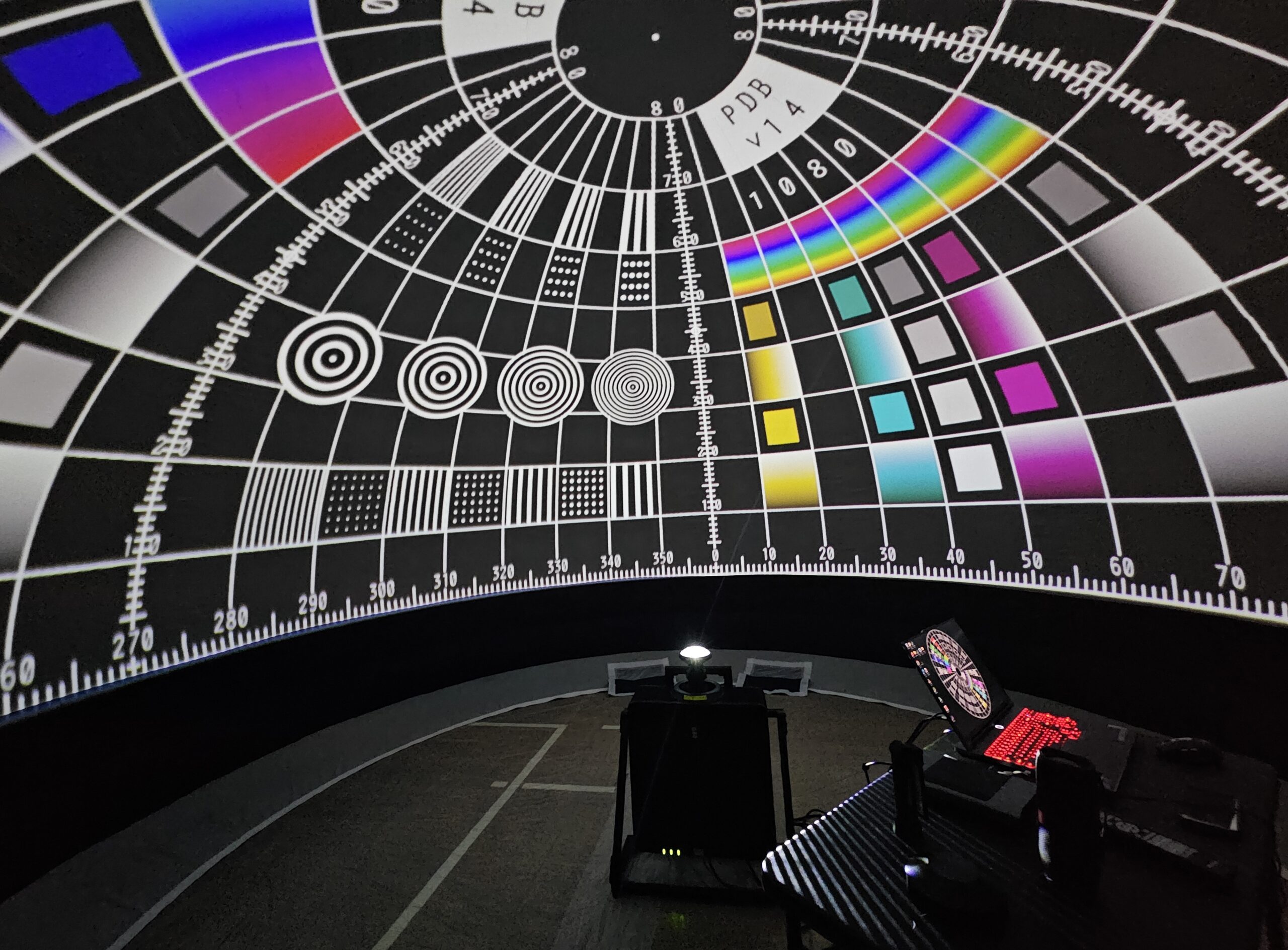
Uniontown, PA:
Seiler delivered a turn-key portable planetarium system to Laurel Highlands School District in Uniontown, PA. The 5m single-pressure dome features a double-door entrance, making it perfect for programs requiring wheelchair access. The fulldome projection system is a Seiler Planetarium Essentials portable system, model SPE-1200-L. This 6300 lumen WUXGA projection system features a Seiler-designed lens stabilizer which makes for easy installation, removal, and adjustment of the fisheye lens. An intuitive Seiler Planetarium Essentials GUI for OpenSpace allows the operator to work from a wireless tablet.
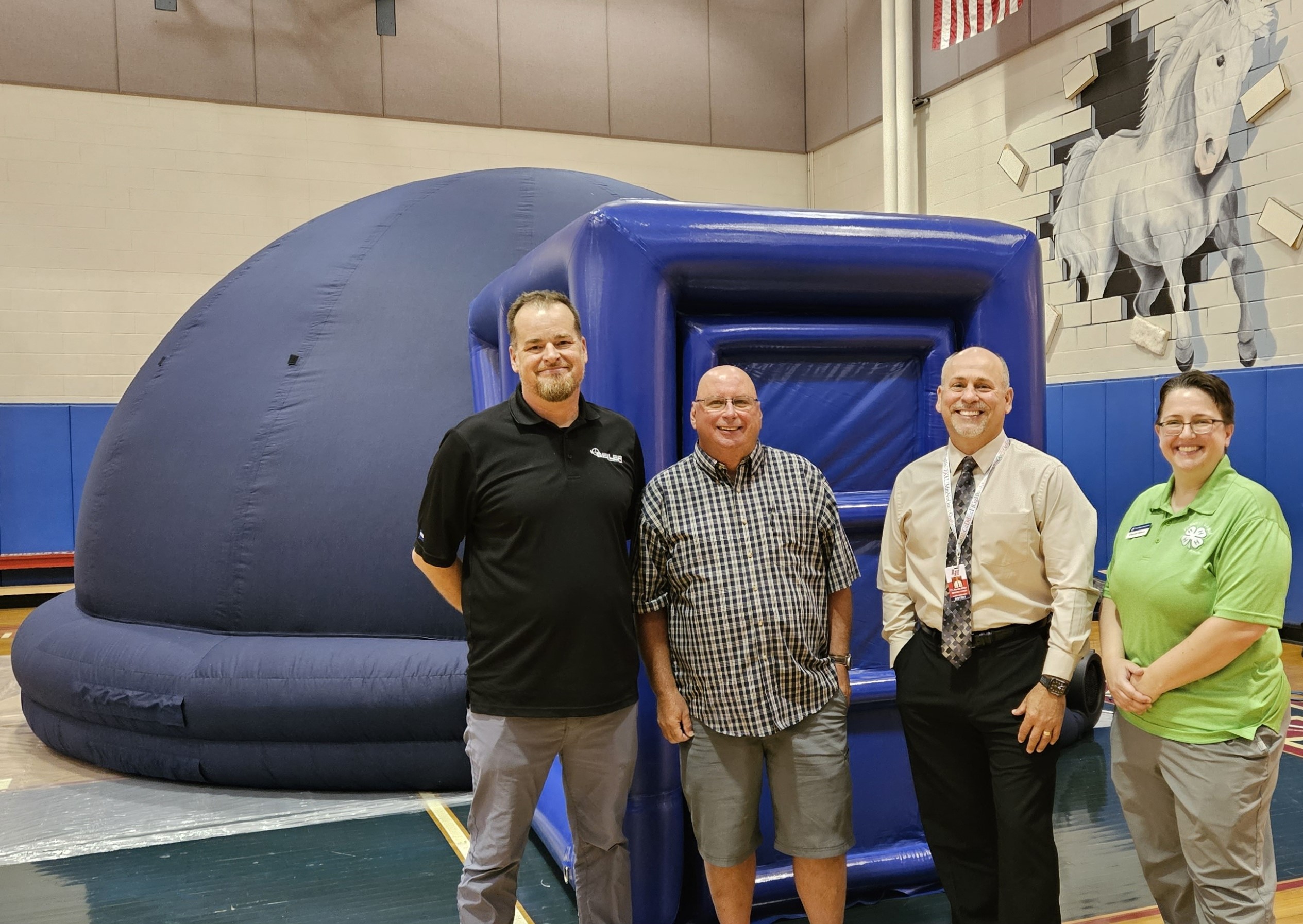
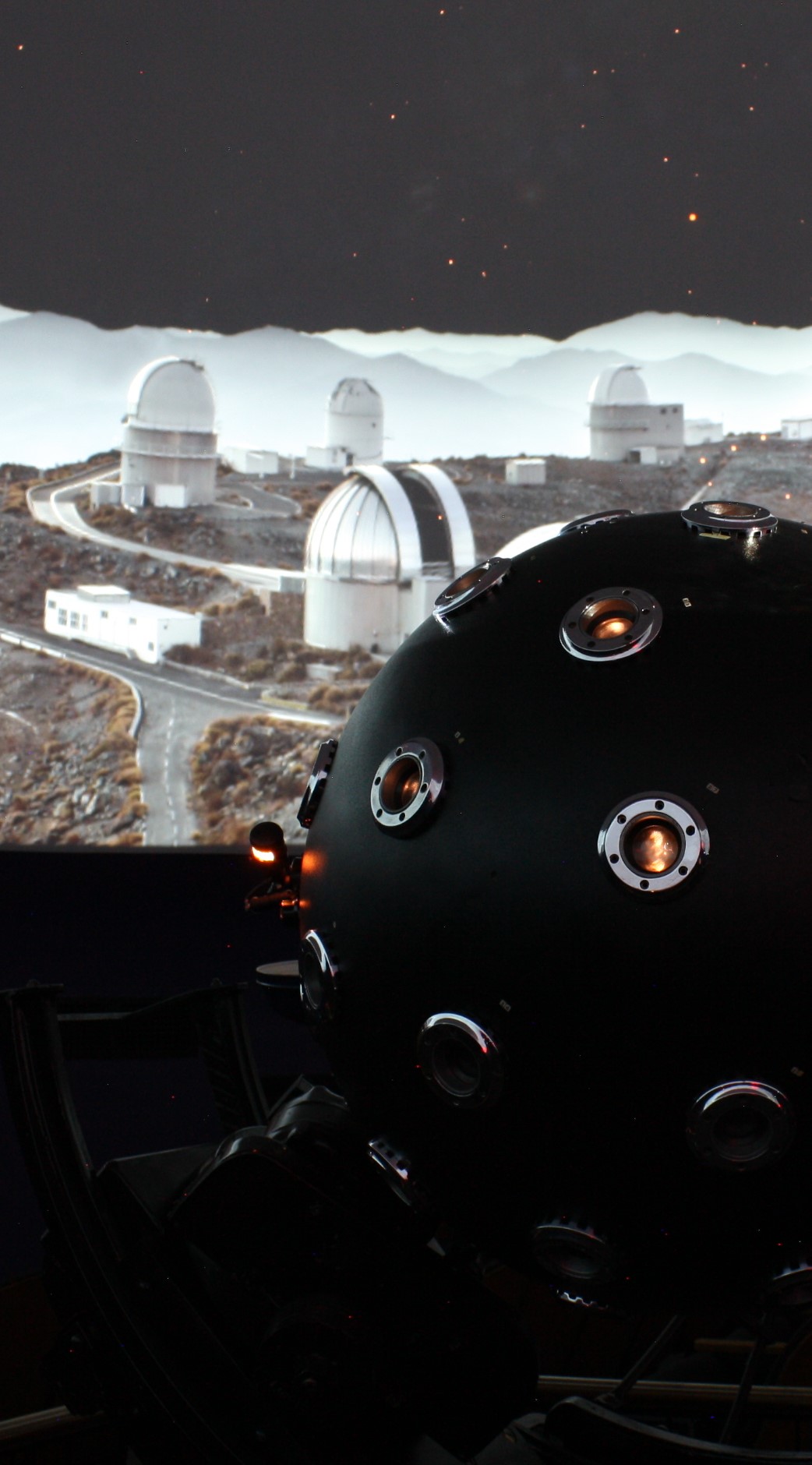
Springfield, MA:
In April 2023, Seiler Planetarium and ZEISS installed a VELVET LED Duo fulldome projection system in the historic Seymour Planetarium in Springfield, MA. Their one-of-a-kind Korkosz starball is the oldest American-made starball in existence and still projects a beautiful starfield on their original 85-year-old dome.
The Seymour staff now enjoy a massive library of fulldome content able to be played back on demand, seamlessly and in vibrant color. Alternatively, they can navigate the universe via UNIVIEW astro-visualization software, “flying” from their street to the cosmic microwave background in a matter of seconds. This is also the first U.S. planetarium to feature UNIVIEW OpenDome, allowing staff to easily run additional content on their dome using programs such as Stellarium, OpenSpace, YouTube and more. The complete system boasts a 4500-watt 5.1 sound system designed and installed by Seiler Planetarium.
The key to the success of this project is firmly rooted in the choice of projection technology. The ZEISS VELVET projectors, specifically designed for use in planetariums, brings the capability of fulldome video and additive imagery that can be overlayed with the stars of the Korkosz projector without washing out their stars. This has been a long dream of many planetariums, and one that is possible using VELVET with its 2,500,000:1 native contrast ratio and legendary ZEISS optics.
Seiler’s Howard George says of the installation, “It was a privilege to work next to the legendary Korkosz. The VELVET projectors will complement it, rather than replace it, serving to retain and preserve the iconic status of this planetarium for decades to come.”
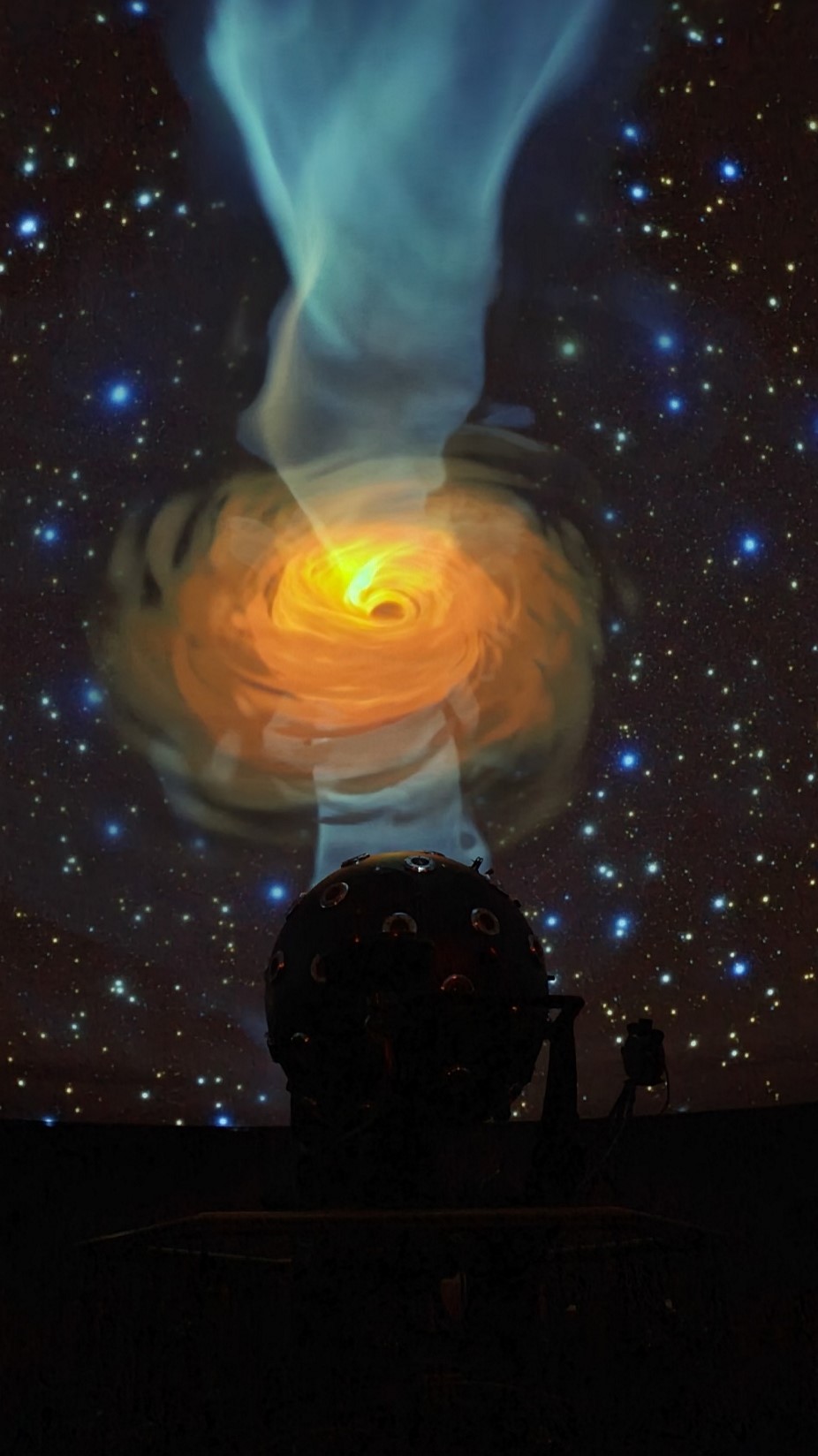
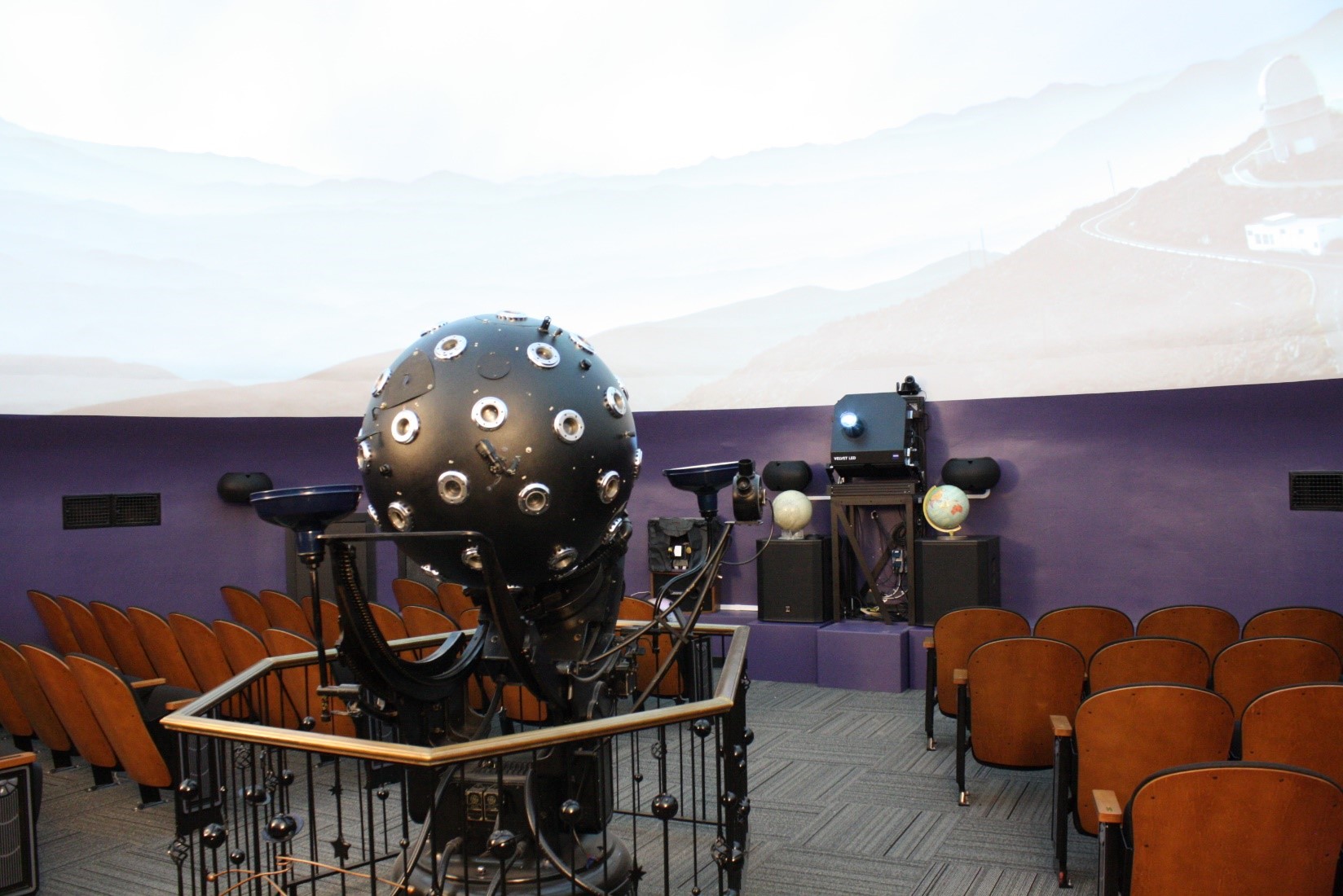
The Springfield Museums’ Seymour Planetarium is the oldest original planetarium in the world, home to the legendary one-of-a-kind “Korkosz” starball, built on-site in 1937, still operating under its original dome. One of the VELVET projectors and several speakers can be seen mounted to the walls.
CHALLENGES OVERCOME: To make this installation possible, the unique qualities of the historic Korkosz projector and the 85-year-old dome were captured using our site scanning technology. This process, now standard procedure for all projects and most initial site visits, is a form of lidar scanning which allows us to capture detailed measurement data. We then modeled the projection angles and convinced ZEISS that the Seymour Planetarium was suitable for an extremely rare cove-mounted projection, paired with their existing optomechanical projector. This configuration allowed us to add the new system without altering the historic Korkosz projector or its ornate audience barrier. With no space behind the wall, mounting the projectors within the theater on rugged stands was necessary. These stands were later covered for aesthetics.
Beulah, MI:
On Saturday, January 14 2023, I met Aaron Harris at the Go For Launch! event in the Adrian, MI. He was giving planetarium shows in his new portable dome using our ‘loaner’ Barco G60 projector. I was immediately greeted by Michelle Lucas, famous for her work at NASA’s Johnson Space Center and CEO of Higher Orbits, the non-profit that puts on the event.
The event was in PlaneWave Instruments telescope factory; COGNiTiON’s dome was in a room of .7m, $250,000 telescopes. I went into COGNiTiONS 6M Emerald portable dome with about 20 others. Aaron Harris gave a live 45-minute show in Space Engine which ran well and looked okay. The WUXGA resolution was the weak link of the projection, but Aaron later conceded that higher res projectors were out of their budget. At one point, he allowed a volunteer to operate his custom touchscreen/keyboard/mouse console. He’s assigned hotkeys in Space Engine and his keyboard is assignable led backlight keys which in his opinion make operation a breeze.
After the show, we talked at length about his hardware, his settings and use of the projector. We discussed the GLPA Conference and his plans for their new portable system. I thoroughly detailed the laser safety data and lens adjustment procedure to him. I was surprised to hear that he had not adjusted the lens in the three months he’d had the loaner projector. We signed the Final Delivery Acknowledgment and exchanged projectors and remotes. I left him the original Barco and Navitar boxes and documentation.
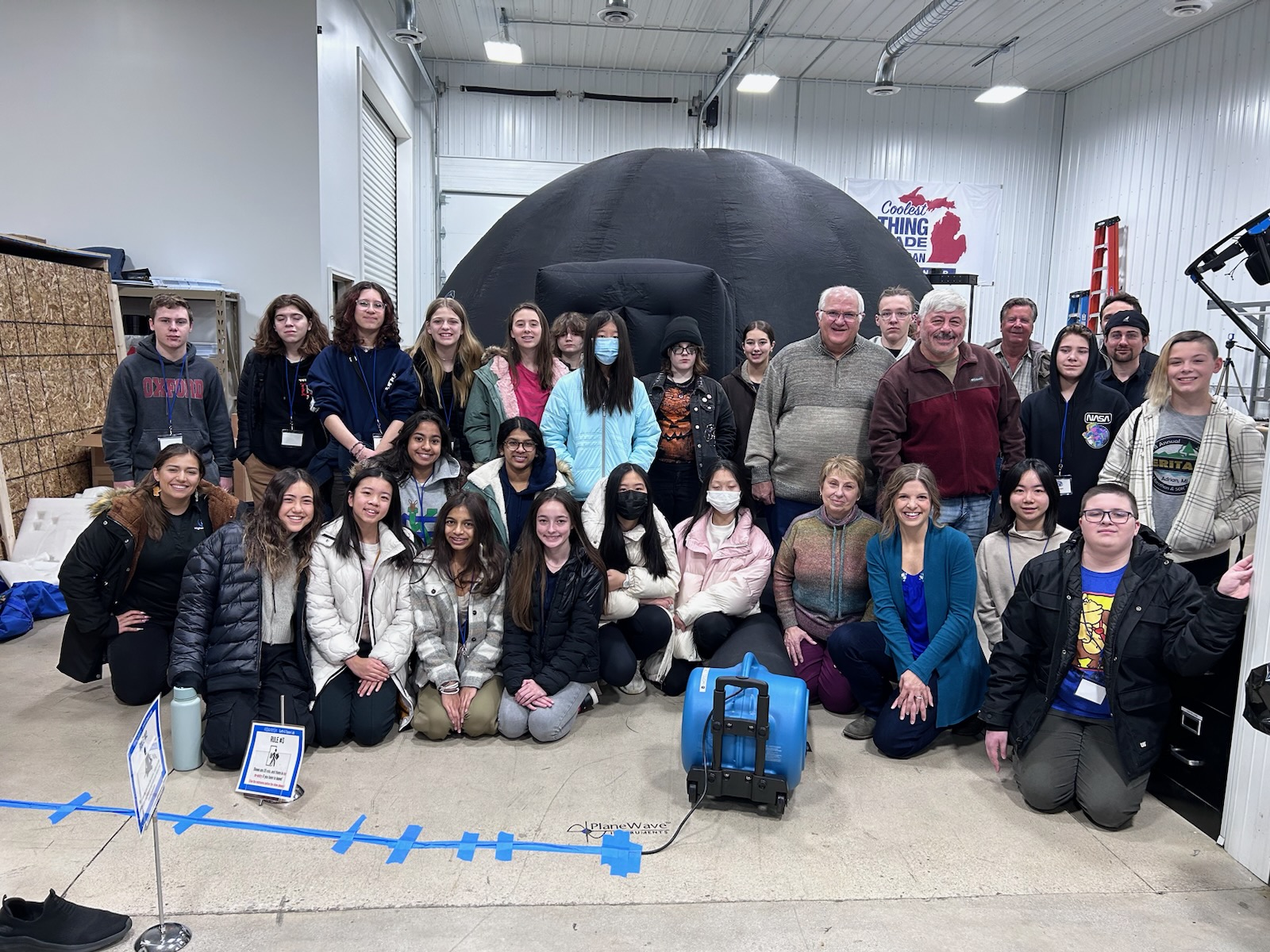
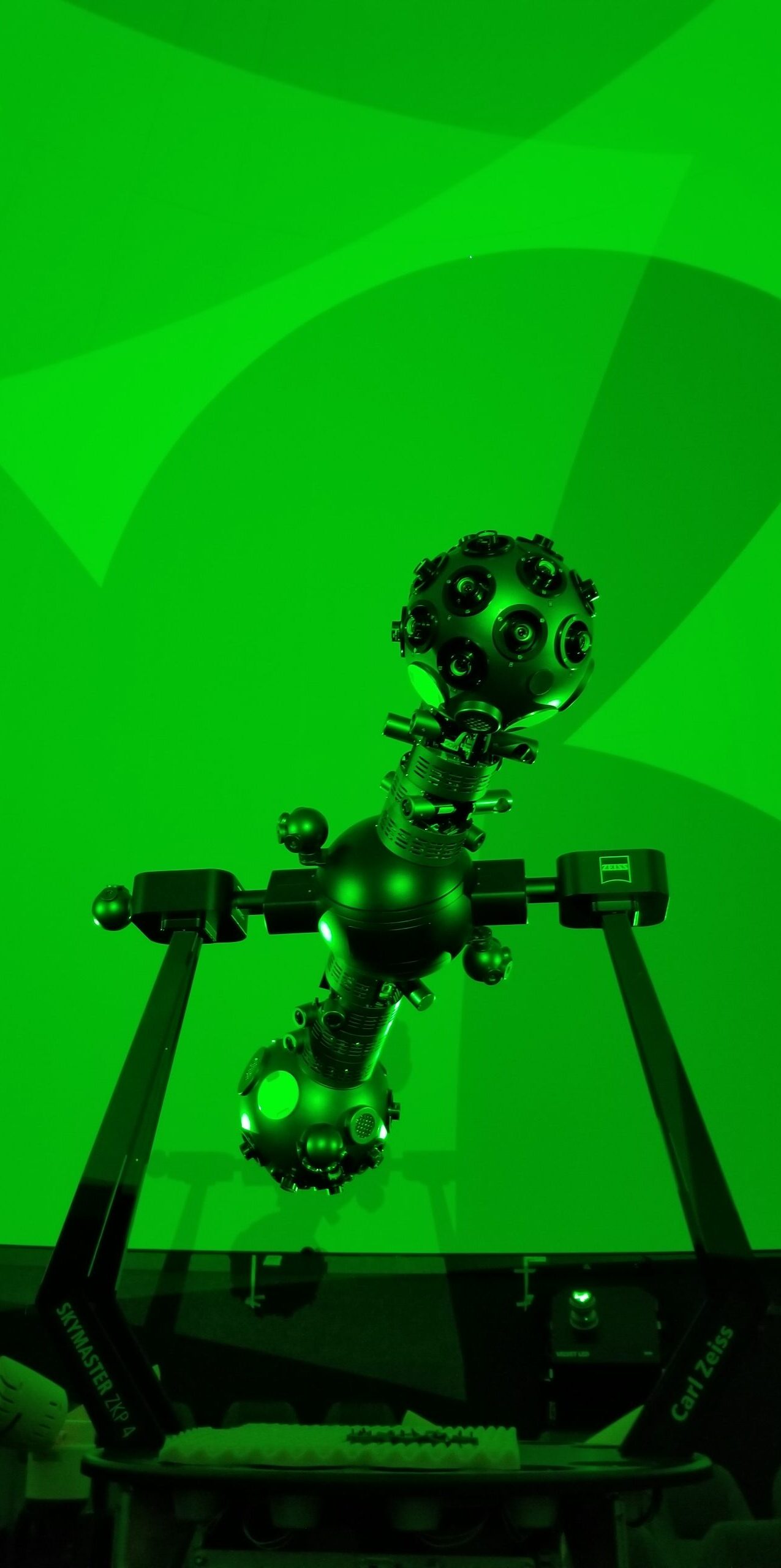
Kingsport, TN:
Nestled into the hills of a 3650-acre park filled with scenic views, wildlife, and a picturesque 100-year-old 44-acre reservoir lake, The Bays Mountain Park & Planetarium in Kingsport, TN features a world-class, state-of-the-art ZEISS hybrid planetarium system comprised of two main systems…their existing SKYMASTER ZKP-4 which was upgraded with LED illumination, providing a crisp night sky on the park’s 40ft dome, and a 6-channel ZEISS VELVET LED projection system provides a shadowless projection onto the dome using the most advanced projection technology available from ZEISS.
Both systems can be controlled together in a hybrid configuration to make best use of the technology for a particular task, such as leaving the stars to be created by the ZKP-4 while exploring an Earth-based view of the night sky, automatically transitioning to a digital representation of the stars when leaving earth’s atmosphere and travelling around the solar system and beyond. The VELVET LED projection features brilliant colors and a 2,500,000:1 native contrast ratio to maintain the depth of black one comes to expect away from the light pollution of a bustling city when looking at the night sky outside, or inside with a ZEISS star projector…both of which the staff have become quite accustomed to enjoying.
CHALLENGES OVERCOME: For this project, our team was faced with the challenge of thin walls and no interstitial space for mounting the projectors. With our theater scanning and proper planning, we were able to find optimal placement of the projectors within the theater and requiring removal of the fewest seats possible. Seiler provided the rigid projector mounts anchored to the floor, while the facility provided the decorative covers. The unique qualities of the ZEISS lensing allow the projectors to be aimed off-axis to the opposite side of the dome illuminating around the center-mounted star projector without casting distracting shadows in the image projection.
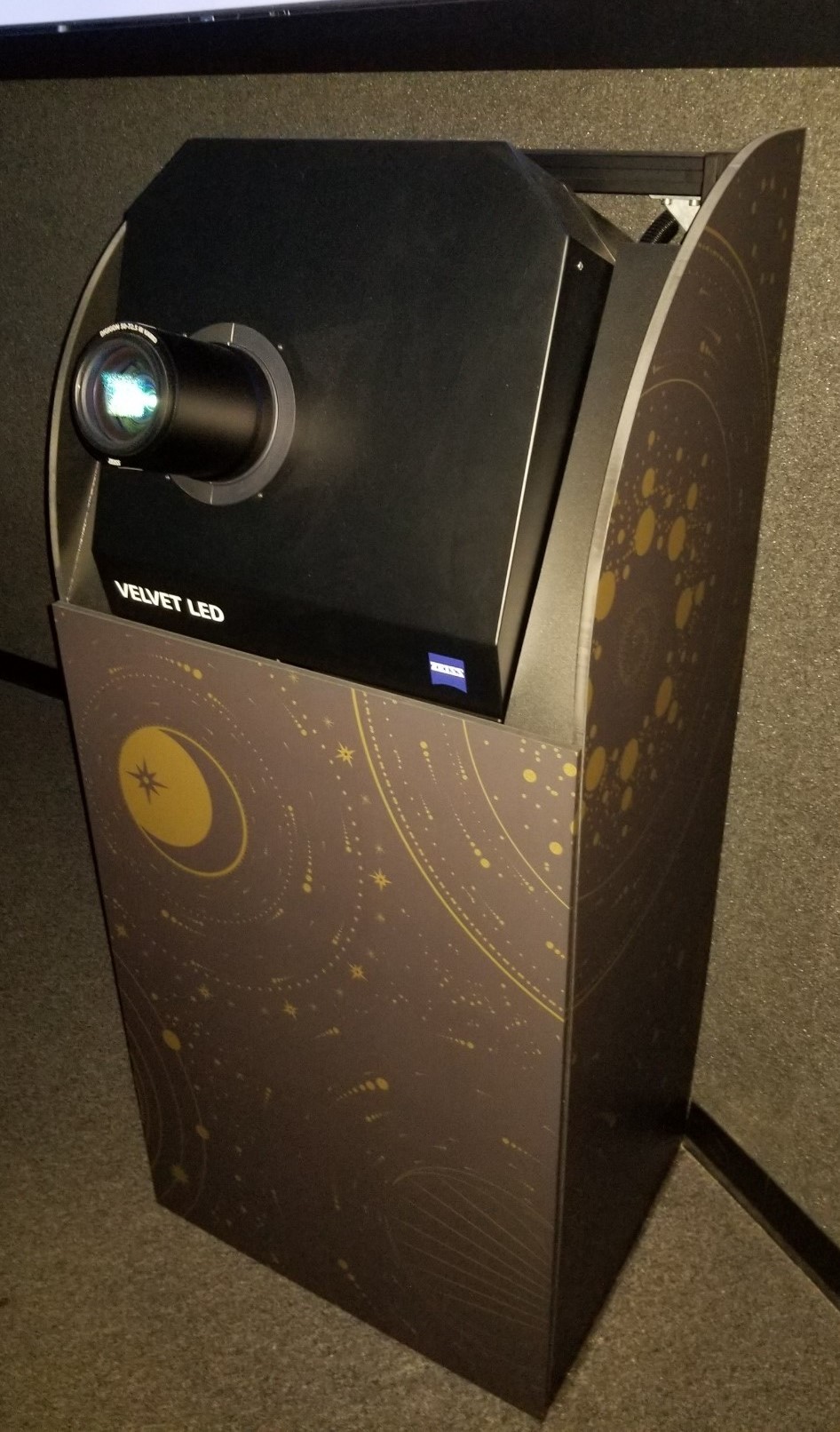
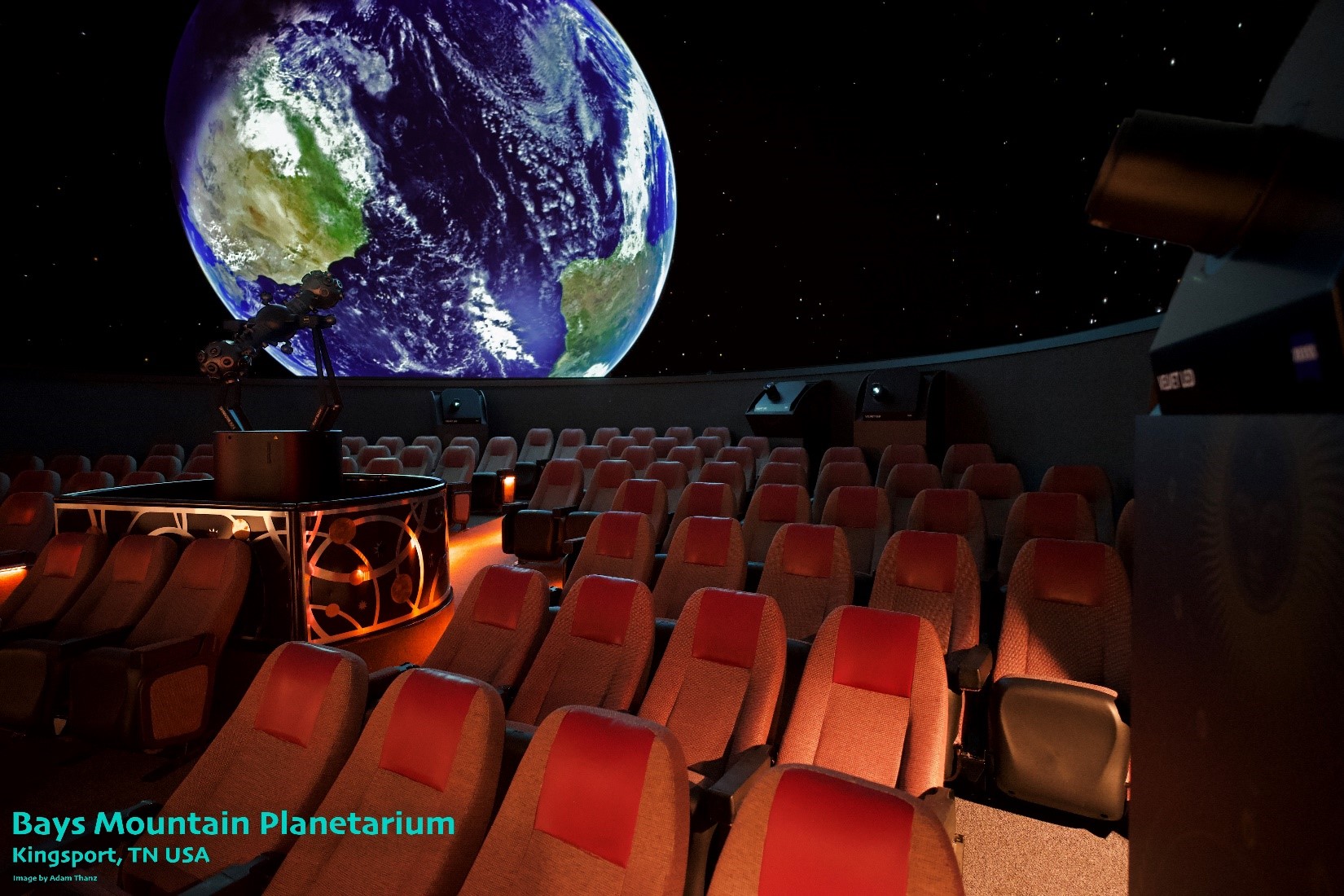

Buffalo, NY:
Central to the teaching of astronomy in college planetariums is the classic opto-mechanical star projector. The ZEISS SKYMASTER ZKP-4 LED, such as the one at Buffalo State College’s new Whitworth-Ferguson Planetarium easily rises to the challenge, as this is the exact reason for its existence. With numerous options available, from constellation figures to various grids, markers, and other didactic features, each projector has an amount of customization possible so that the device can best suit the needs of the specific facility which will use it.
CHALLENGES OVERCOME: This facility features a very tall spring line, so a custom pedestal was manufactured to provide a sturdy base and raise the projector to a point which would allow the integrated lift to reach the center point of the dome for proper projection. This project was largely installed during the pandemic when ZEISS personnel could not visit the US, so the team from Seiler provided the installation of this precision instrument.
